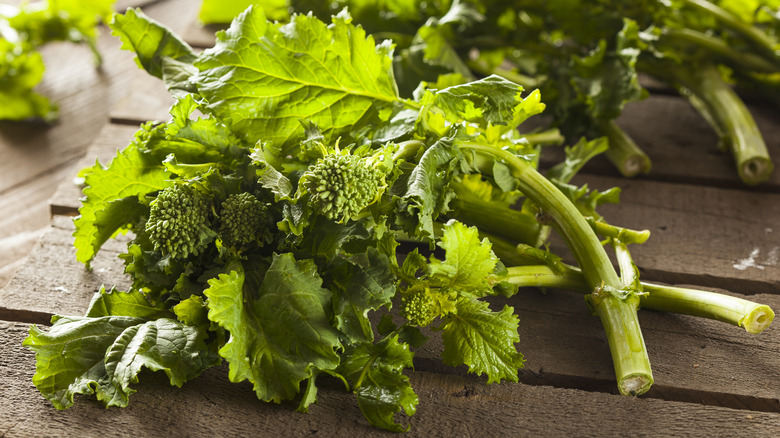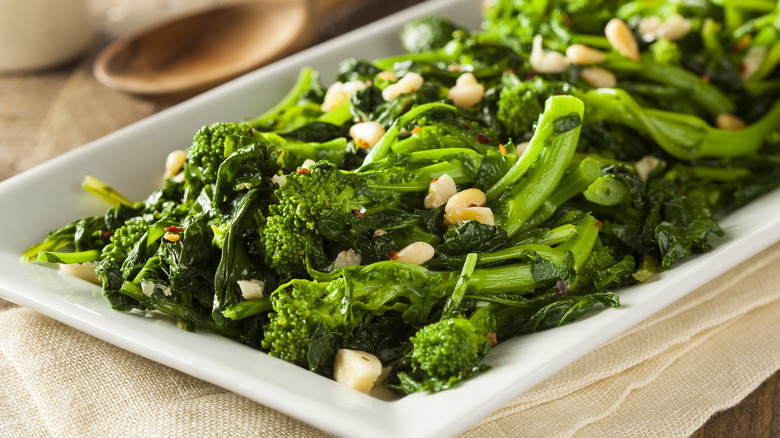The Simple Method To Take The Bitterness Out Of Broccoli Rabe
For bitter greens lovers out there, there is no love as pure as that of broccoli rabe. Also known as rapini, the vegetable is commonly used in Italian cooking and is similar in texture and taste to broccolini or Chinese broccoli. But its uniqueness lies in the variation in texture throughout the plant. You might get a bite of a bracingly bitter leaf, a thick and juicy stem, or, if you're lucky, a sweet and nutty floret.
The strong flavor of broccoli rabe is often used as a contrasting element in cooking, adding depth to mild and creamy cannellini beans, or balancing the fat and salt in a pork sandwich. It is often seen in Italian restaurants in pasta with pork sausage, or even as a topping for pizza. Broccoli rabe begs to be sautéed with olive oil and garlic, and sprinkled with piquant red pepper flakes, and a spritz of lemon adds a fresh acidic counterpart to the hearty greens.
But sometimes broccoli rabe can simply be too bitter for the requirements of a dish, or for a sweet tooth-riddled palate. There is an easy fix, though, for overly bitter broccoli rabe, and it will only add one step to your cooking routine.
Blanch your broccoli rabe
The best way to take some of the bitterness out of your broccoli rabe is to blanch it. Under normal circumstances, you'd likely be cautioned against boiling green leafy vegetables, as the process results in a soggy, flavorless end product. But sometimes blanching vegetables, or boiling them for a very short period of time, can be useful in correcting for flavor or textural imbalances.
Broccoli rabe's bitter flavor comes from chemical compounds known as glucosinolates, which are found in other bitter greens like kale, collard greens, and mustard greens. Since these compounds are water-soluble, blanching these veggies will allow some of the glucosinolates (and thus, some of the bitterness) to leach into the water.
To make your broccoli rabe less bitter, toss it in a pot of boiling salted water for one minute, then drain out the liquid. Then you'll want to quickly plunge the broccoli rabe into an ice bath to stop the cooking process and prevent your broccoli rabe from ggetting soft. Once your broccoli rabe has been cooled, sauté it as you would normally. Blanching will also decrease the cooking time and will make the veg cook more evenly throughout. Young broccoli rabe is generally smaller and sweeter, so this technique works best for taming the bitterness you'll find in more mature broccoli rabe.

